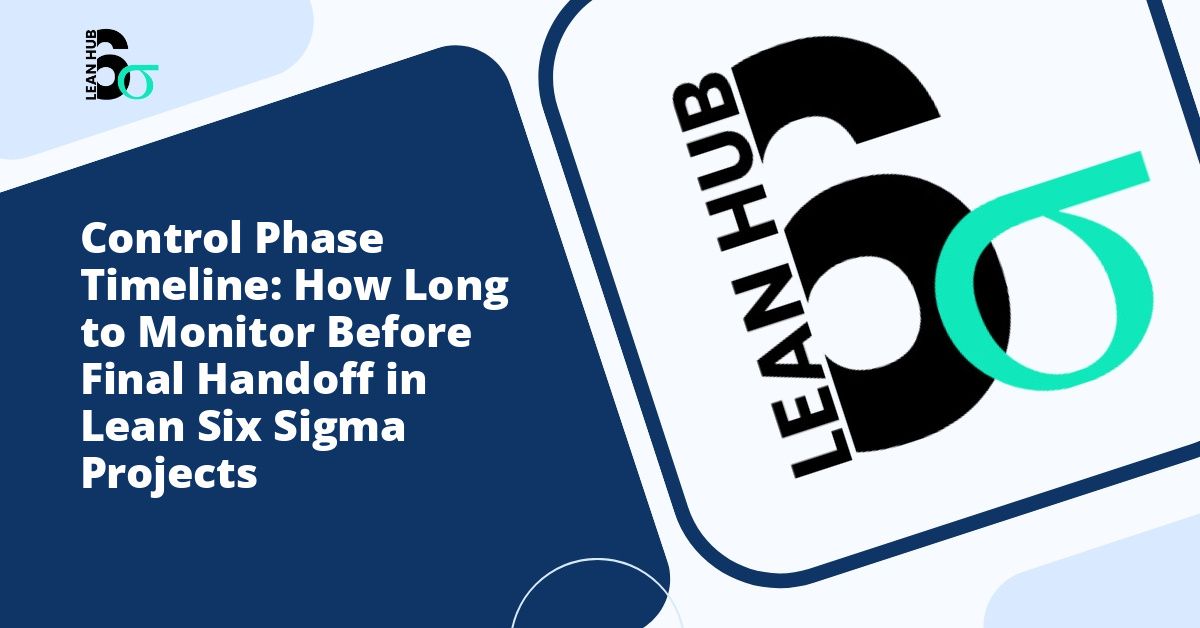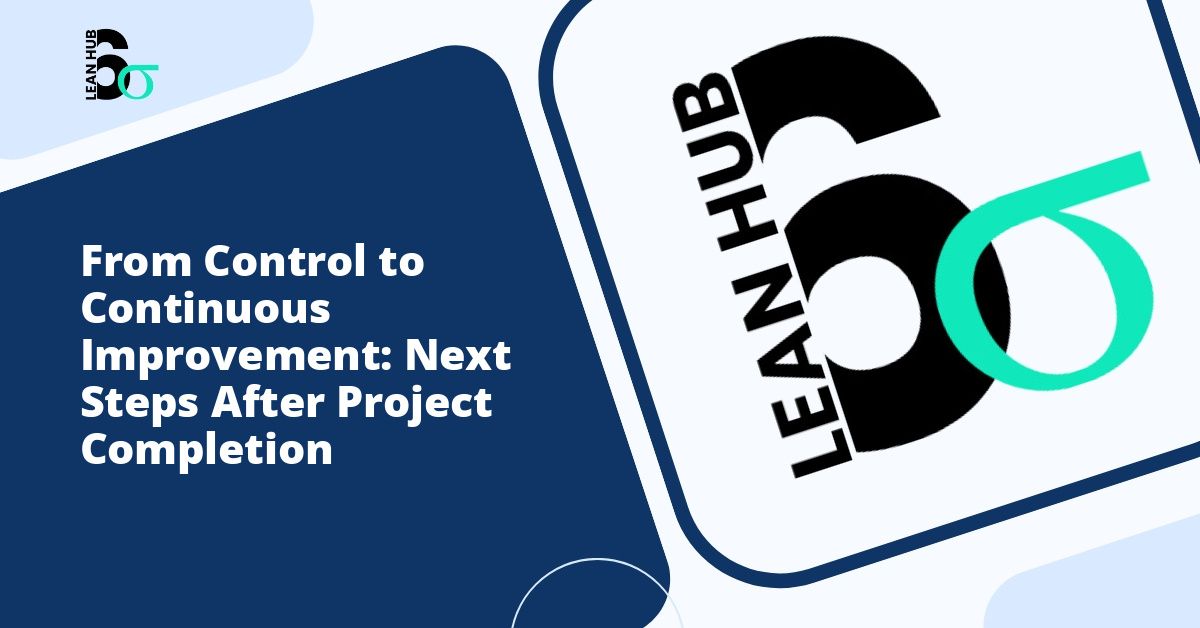In the world of process improvement, the Control Phase represents the critical final stage where theory meets sustained reality. Many organizations rush through this phase, eager to recognize phase completion and move on to the next project. However, determining the appropriate timeline for monitoring before final handoff can make the difference between lasting success and costly regression.
Understanding the Control Phase in Lean Six Sigma
The Control Phase serves as the guardian of all improvements achieved throughout a Lean Six Sigma project. After investing significant time and resources in defining problems, measuring current performance, analyzing root causes, and implementing improvements, organizations must ensure these gains persist beyond the project team’s active involvement. You might also enjoy reading about Documentation Standards for Control Phase: Essential Records to Maintain in Lean Six Sigma Projects.
This phase focuses on standardizing improvements, monitoring key metrics, and establishing systems that prevent backsliding into old habits. The question that consistently arises is: how long should we monitor before confidently handing off the improved process to its permanent owners? You might also enjoy reading about Lean Six Sigma Control Phase: The Complete Guide for 2025.
Why Timeline Matters in the Control Phase
The duration of the Control Phase directly impacts project success rates. Monitor too briefly, and you risk declaring victory prematurely while underlying issues remain hidden. Extend the timeline unnecessarily, and you tie up valuable resources while delaying other improvement initiatives. You might also enjoy reading about How to Train Process Owners for Long-Term Process Management Success.
Organizations practicing lean six sigma principles understand that the Control Phase timeline must balance thoroughness with efficiency. This phase validates whether improvements can withstand real-world variations, seasonal fluctuations, personnel changes, and unexpected disruptions.
Factors Influencing Control Phase Duration
Several critical factors determine appropriate monitoring timelines before final handoff:
- Process Cycle Time: Longer cycle processes require extended monitoring periods. Manufacturing processes with monthly cycles need more observation time than daily transaction processes.
- Process Stability History: Historically unstable processes warrant longer control periods to ensure improvements truly hold under various conditions.
- Complexity of Changes: Simple procedural changes may stabilize quickly, while complex system implementations require extended validation periods.
- Organizational Culture: Organizations with strong change management cultures may sustain improvements faster than those with resistance to new methods.
- Data Availability: The frequency and reliability of performance data directly affects how quickly you can recognize phase success or identify emerging issues.
Recommended Control Phase Timelines
While every project presents unique circumstances, industry best practices provide useful guidelines for Control Phase duration.
Standard Timeline: 90 Days Minimum
Most lean six sigma practitioners recommend a minimum 90-day control period for typical process improvements. This three-month window captures sufficient data points to identify trends, seasonal variations, and potential regression indicators. For many business processes, 90 days provides adequate time to observe the process under various normal operating conditions.
Extended Timeline: 6 to 12 Months
Complex processes or those with significant seasonal variations may require six months to one year of monitoring. Consider extended timelines when:
- The process exhibits strong seasonal patterns affecting performance
- Changes involve significant cultural or behavioral modifications
- Multiple interconnected systems underwent simultaneous changes
- The process serves critical functions where failure carries severe consequences
- Historical data shows high volatility or unpredictable patterns
Accelerated Timeline: 30 to 60 Days
In specific situations, abbreviated control periods of 30 to 60 days may suffice. These situations include:
- Simple, well-defined processes with rapid cycle times
- Changes limited to documentation or minor procedural adjustments
- Processes with real-time monitoring capabilities and immediate feedback
- Pilot programs requiring quick validation before broader implementation
Key Milestones During the Control Phase
Rather than viewing the Control Phase as a single monitoring period, structure it with distinct milestones that provide decision points throughout the timeline.
Initial Stabilization Period (Weeks 1-4)
The first month focuses on immediate stabilization. Monitor daily or weekly, depending on process cycle time, to catch and correct any implementation issues. This period validates that the improved process operates as designed under standard conditions.
Performance Validation Period (Weeks 5-12)
During months two and three, monitoring frequency may decrease slightly as you validate sustained performance. This period should demonstrate consistent achievement of target metrics and reveal whether initial results represent genuine improvement or temporary change.
Stress Testing Period (Variable Duration)
Deliberately expose the improved process to challenging conditions: higher volumes, staff changes, or system variations. This validates that improvements remain robust under stress and helps identify any additional control mechanisms needed.
Independence Testing (Final 2-4 Weeks)
Before final handoff, gradually reduce project team involvement while maintaining monitoring. This tests whether process owners can sustain improvements independently and identifies any additional training or support requirements.
How to Recognize Phase Completion Readiness
Determining when to recognize phase completion and proceed with final handoff requires evaluating multiple criteria beyond simple timeline completion.
Statistical Validation
Control charts should demonstrate statistical process control with performance consistently within established limits. Capability indices (Cpk) should meet or exceed targets, indicating the process reliably produces desired outcomes.
Documentation Completion
All standard operating procedures, work instructions, and control plans must be finalized, approved, and accessible to process owners. Documentation should reflect the actual improved process, not the idealized version.
Training Verification
Process owners and operators must demonstrate competency in executing improved procedures and using monitoring tools. Verification should include practical assessments, not just classroom training completion.
Response Plan Testing
Reaction plans for out-of-control situations should be tested and validated. Process owners must understand how to recognize problems and know exactly how to respond when metrics deviate from targets.
Avoiding Common Control Phase Pitfalls
Even experienced lean six sigma practitioners encounter challenges during the Control Phase that can compromise handoff success.
Premature Handoff
The most common mistake involves ending monitoring too early when initial results look positive. Resist pressure to close projects quickly. Early success may reflect the Hawthorne effect, where performance improves simply because people know they are being observed, rather than sustainable process changes.
Inadequate Process Owner Engagement
Failing to involve process owners throughout the Control Phase creates handoff difficulties. Process owners should actively participate in monitoring, not passively receive reports. Their engagement builds ownership and capability for independent management.
Monitoring Wrong Metrics
Some teams continue monitoring project metrics rather than transitioning to ongoing operational metrics. Ensure monitoring systems align with what process owners will realistically track long-term, not just what the project team found interesting.
Structuring the Final Handoff
When monitoring timelines complete and all readiness criteria are met, structure a formal handoff process rather than simply ending project team involvement.
Conduct a formal handoff meeting documenting baseline performance, improvement gains, current capability, and monitoring requirements. Transfer all documentation, provide final training, and establish a follow-up schedule for periodic check-ins during the months following handoff.
Create a 30-60-90 day post-handoff review schedule where the project team briefly reconnects with process owners to verify sustained performance and address any emerging issues.
Conclusion
The Control Phase timeline represents a critical balance between thorough validation and efficient resource utilization. While 90 days serves as a reasonable baseline for most processes, factors including complexity, stability history, and organizational culture should inform your specific timeline decisions.
Success in lean six sigma projects ultimately depends not on how quickly you can recognize phase completion, but on how effectively you ensure improvements persist long after project teams move on to new challenges. Invest adequate time in the Control Phase, structure clear milestones throughout the monitoring period, and resist pressure to declare victory prematurely. The sustained benefits will justify the patience required to do it right.








